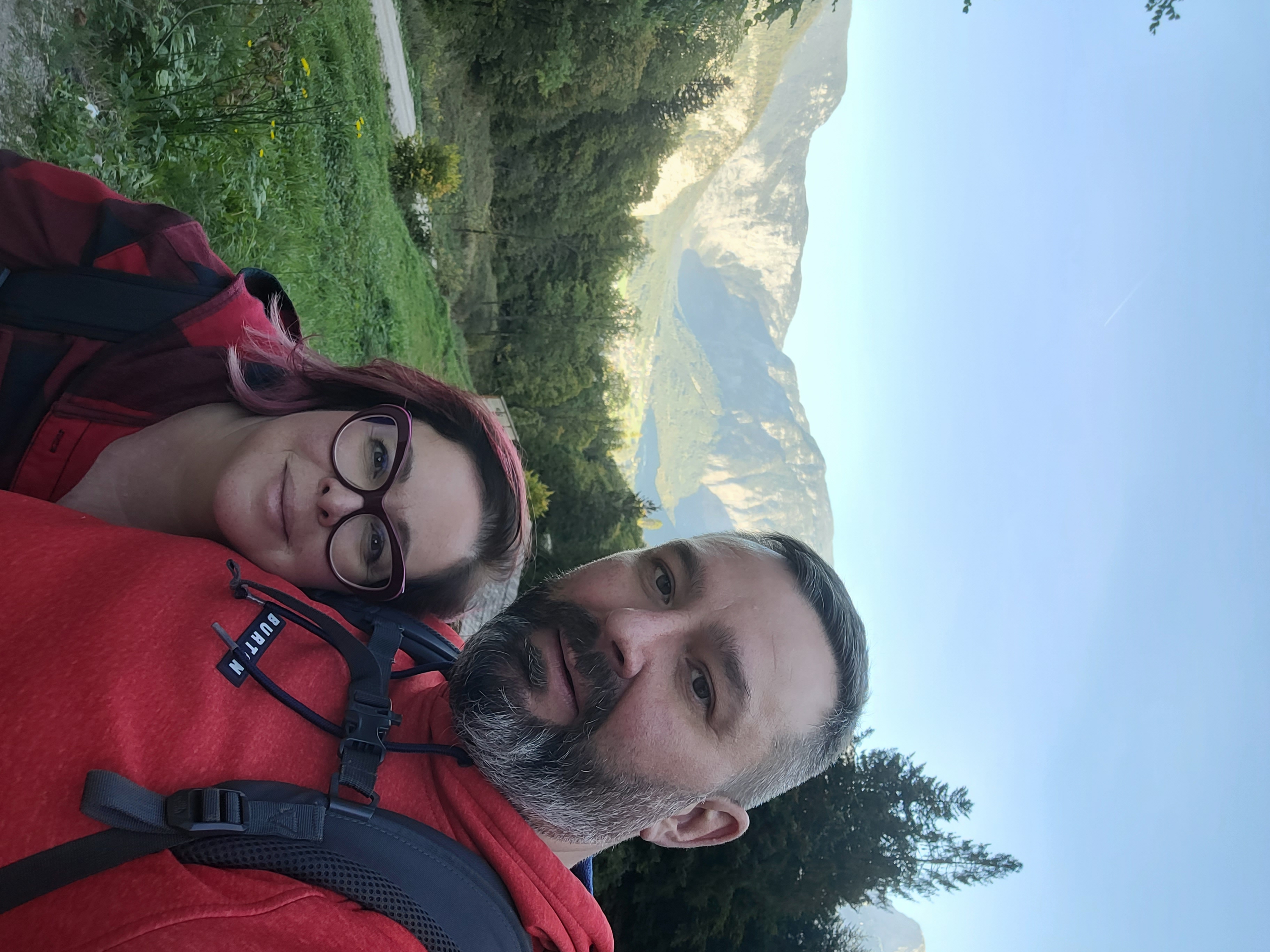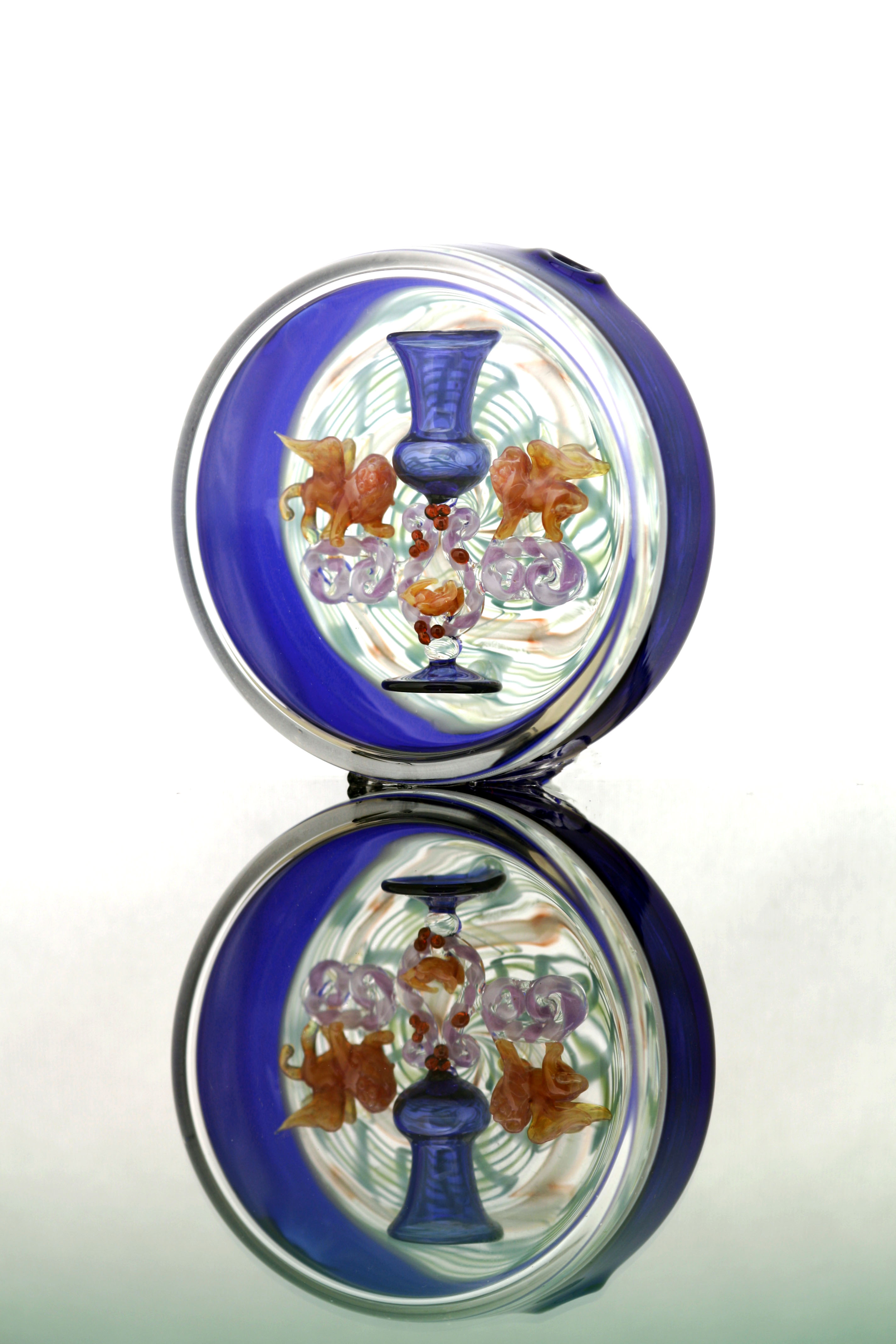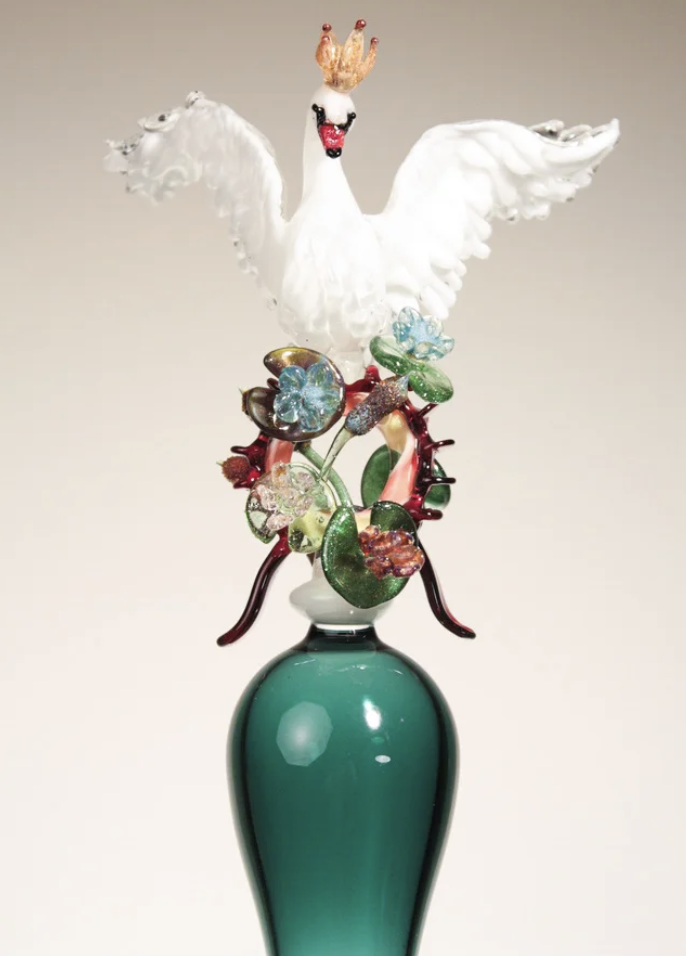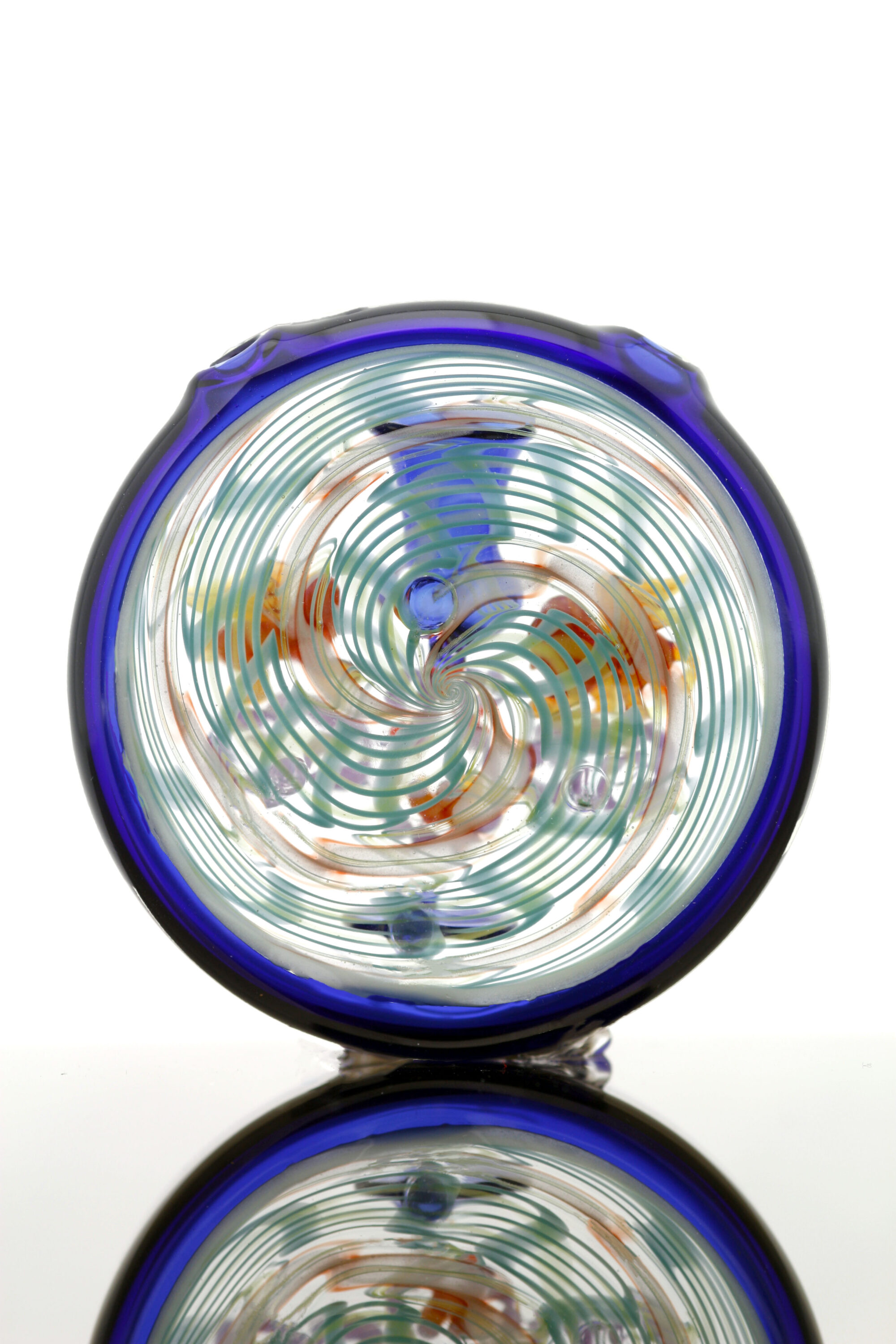Second Place Winners of Your Bead for Venice 2024
Contemporary glass artist Erwin Eisch said, “From a glowing inert mass must emerge things of beauty that are endowed with speech.” What, then, does the second place- winning piece in the 2024 Your Bead for Venice competition, Piazza San Marco, have to say?
Artists Cédric Ginart and Karina Guévin collaborated to craft a piece that speaks of Venice itself, evoking the winged lion that watches over Piazza San Marco from its column. It also speaks of past tradition, incorporating centuries-old Venetian
lampworking techniques like zanfirico canework and incalmo, accented with classic cobalt blue. Finally, it nods to the contemporary—both in its material, borosilicate glass, and in its unexpected humor: at the heart of the piece sits a glass roasted chicken.
The Canadian-based glass artists often create as a team, each bringing a distinct skill set to their collaborative work. Karina, with her flair for intricate and expressive compositions, crafted the delicate inner microsculpture, while Cédric, drawing on his expertise in scientific glassblowing, provided the precise and elegant setting that holds the piece together. Their combined talents result in a striking blend of sculptural elegance and technical mastery—qualities that define Piazza San Marco as a true masterpiece.
We spoke with Cédric and Karina about their prizewinning competition piece, the inspiration behind it, and their experience with Your Bead for Venice. They shared their passion for glass art, the creative forces that drive their work, and their advice for fellow artists.

About their entry to the Your Bead for Venice competition, Cédric and Karina said,
“We have chosen to propose a contemporary bead for which we have used several traditional Venetian glass flameworking techniques combined with modern scientific glassblowing methods. The history and traditions of Venice were our main sources of inspiration. We let ourselves be inspired by the bas-reliefs of the lion of Venice, which you can find almost everywhere on palazzi, and which were, at the time, carved in stone or cast in glass. The Venetian goblets are an emblematic symbol of Murano glasswork that we enjoy revisiting by replacing the white swan that traditionally sits in the center of the piece with a roasted chicken. You need to have fun, after all! The use of cobalt blue and pastel colors is a reference to antique Venetian chandeliers. Cobalt blue glass has been used since the 13th century.”
“The bead we made is a hollow bead made of borosilicate glass with a background of twisted canes (zanfirico). The back, sides and face of the bead are assembled using the incalmo, and a delicate white lip wrap separates the blue side from the transparent face. The internal part of the piece is made up of a miniature Venetian goblet and two solid micro-Venetian lions assembled using twisted canes. Four attachment points allow this composition to be held on the back of the bead. This work had some interesting technical challenges that we enjoyed solving.”
How did your collaboration come together to make Piazza San Marco?
This piece was developed by four hands, illustrating the synergy that guided our creative process. The design was carried out as a duo, exchanging ideas and visions enriching our approach. The work was meticulously divided into two distinct parts: all solid work was executed by Karina Guévin, while the blown work and zanfirico technique were carried out by Cédric Ginart. The final assembly, meanwhile, was carried out together, highlighting our close collaboration and ability to combine our respective skills. This constant interaction throughout the process not only strengthened our artistic bond but also enabled us to create a work that bears the hallmark of our complementary skills.
What advice would you give to a fellow artist who wanted to enter a competition, glass or otherwise? Taking part in an art competition can be an enriching and stimulating experience. Here are a few tips for fellow artists who want to get involved:
First, you must make sure you understand the theme of the competition and the selection criteria. This will help you orient your creation to meet the judges’ expectations. Then, submit a piece that truly represents your artistic style and vision. You must be careful with your presentation and always remember that how you present your work can make a big difference. Make sure your piece is clean, well finished and professionally presented; and you must write a clear description to help the judges understand your approach. But we think that the most important thing is to have fun, stay true to yourself and try to see the competition as a chance to meet other artists and make contacts. This can enrich your artistic journey and open you up to new opportunities.
What was your experience of Glass Week in Venice and the Your Bead for Venice reception?
Venice Glass Week is a prestigious event celebrating the art of glass, bringing together artisans, artists and enthusiasts from all over the world. Participating in this week was an incredible opportunity to explore traditional glass techniques, attend demonstrations, exchange ideas and be inspired by the creations of other artists. The atmosphere of Venice, with its canals and historic architecture, adds a magical dimension to the event.

The reception was a celebration of glass art but also an opportunity to strengthen bonds between artists and share personal stories through their creations.The experience was artistically and personally enriching, offering opportunities to learn, collaborate and celebrate glass art in an inspiring setting.
What do you do when you are not working with glass?
When we’re not working with glass, our minds wander off to distant horizons, filled with dreams and inspiring images. These journeys, whether real or imagined, nourish our creativity and stimulate our inspiration. Every new culture, landscape or encounter becomes
a source of ideas, enriching our artistic practice and prompting us to explore new techniques and forms. So, even outside our studio, the art of glass continues to inhabit us and guide us in our quest for expression.
Why glass?

Glass has a rich history and deep symbolism in many cultures. By creating with this material, we evoke historical narratives, traditions and emotions, adding a narrative dimension to our work.
For us, working with glass also represents a technical challenge that drives us to develop our skills and innovate. The demands of the material encourage precision and mastery, offering a sense of accomplishment when one succeeds in creating a complex piece.
